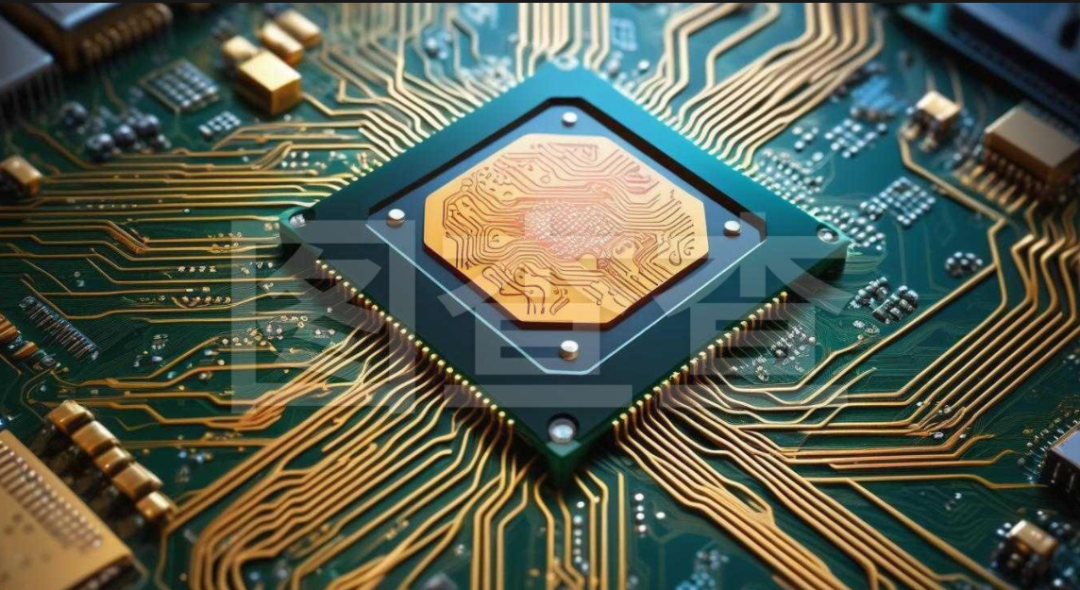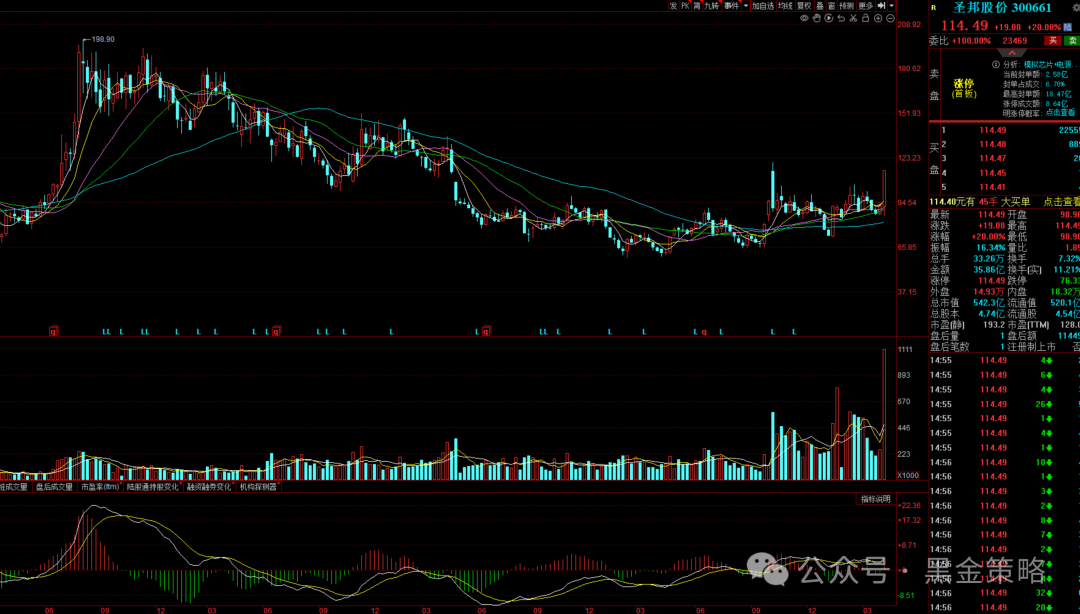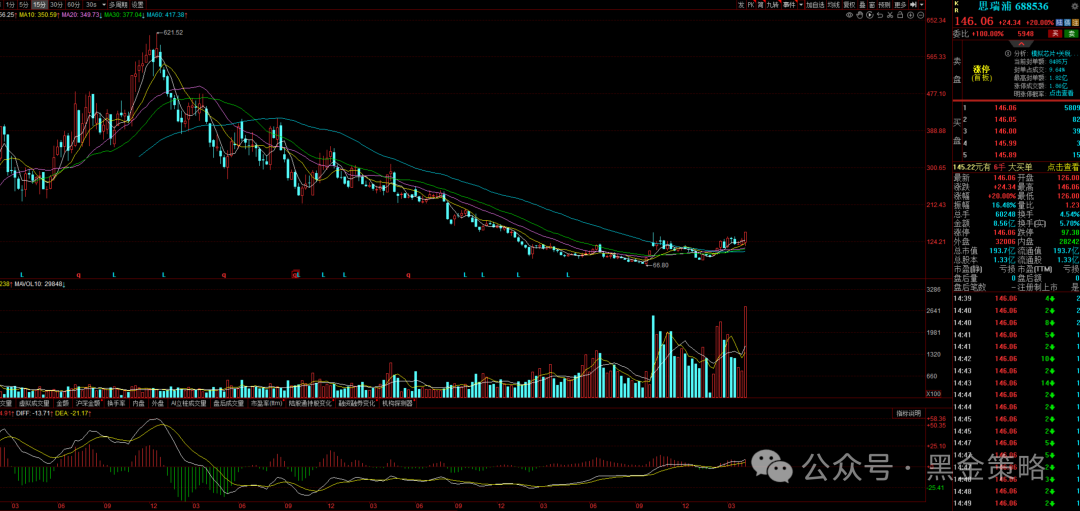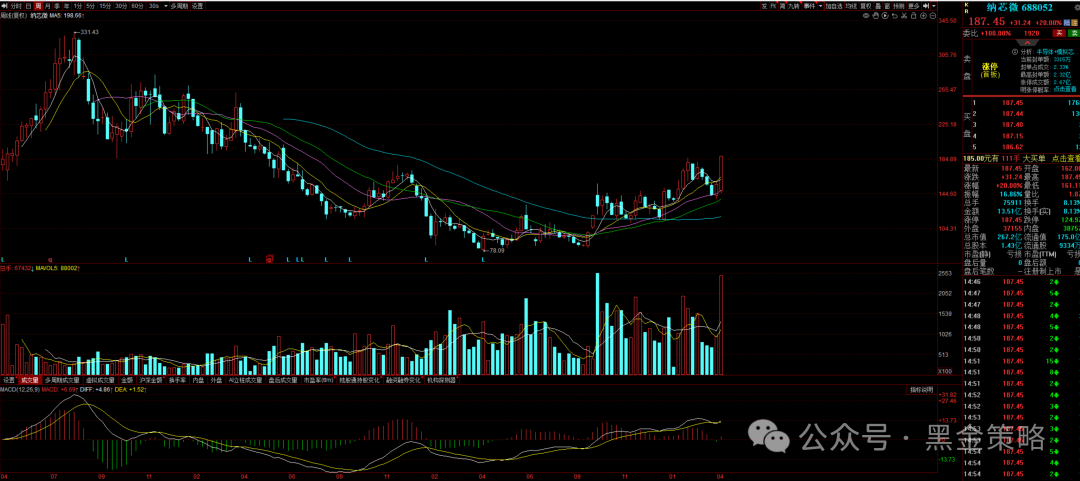 Why will analog chips experience a double boost?1. Tariff policies catalyze accelerated domestic substitutionThe US-China tariff confrontation: In April 2025, the US will impose a 34% tariff on semiconductor products from China (combined with previous rates, the total reaches 54%), and China will retaliate with a 145% tariff on US chip imports. This move directly undermines the price advantage of American analog chip giants like TI and ADI, putting pressure on their market share in China (approximately 40% in 2023).Anti-dumping investigation on low-price dumping: China has initiated anti-dumping investigations against American companies for mature process chips (such as 28nm and above), blocking the export paths of American chips and creating market space for domestic companies.2. Trends in industrial chain restructuringCapacity transfer: American companies concentrate their production capacity domestically (e.g., TI in Texas), and the retaliatory tariffs from China significantly increase their costs, while domestic foundries (like SMIC) are taking on structural orders, leading to an increase in market share and pricing power.Emerging demand drivers: The explosive demand for electric vehicles, AI, and AR devices is driving the expansion of the analog chip market. The global analog chip market is expected to exceed $80 billion in 2023, with China accounting for 300 billion yuan. By 2035, AI and AR smart glasses are expected to add a $10 billion market.Core driving factors:1. Policy catalysis: China’s anti-dumping investigation against American mature process chips, combined with the US’s 54% tariff increase, weakens the cost advantages of international giants like TI and ADI. Under accelerated domestic substitution, the overall gross margin of the industry is expected to recover, driving valuation repair.2. Demand recovery: Demand in the industrial and automotive sectors is rebounding, with the global analog chip market expected to reach $84.34 billion by 2025 (CAGR 1.9%), with China’s market growth rate exceeding the global average (5.15% vs 1.9%), supporting valuation premiums.3. Supply structure optimization: Industry mergers and acquisitions are accelerating (e.g., Silego acquiring Chipone, NXP acquiring Magma), small companies are being cleared out, leading to increased market share for leading companies and enhanced bargaining power.Valuation benchmarks:Industry PE center: The current average PE of the A-share analog chip sector is about 80 times (Silego 143 times, NXP 469 times). If tariff policies are implemented and gross margins recover to over 55%, the PE center is expected to be revised up to 45-60 times by 2025.PS valuation reference: The average PS of international leaders TI/ADI is 6-8 times, while domestic companies, due to higher growth potential, can reach a PS of 10-15 times.2. Core stock valuations
Why will analog chips experience a double boost?1. Tariff policies catalyze accelerated domestic substitutionThe US-China tariff confrontation: In April 2025, the US will impose a 34% tariff on semiconductor products from China (combined with previous rates, the total reaches 54%), and China will retaliate with a 145% tariff on US chip imports. This move directly undermines the price advantage of American analog chip giants like TI and ADI, putting pressure on their market share in China (approximately 40% in 2023).Anti-dumping investigation on low-price dumping: China has initiated anti-dumping investigations against American companies for mature process chips (such as 28nm and above), blocking the export paths of American chips and creating market space for domestic companies.2. Trends in industrial chain restructuringCapacity transfer: American companies concentrate their production capacity domestically (e.g., TI in Texas), and the retaliatory tariffs from China significantly increase their costs, while domestic foundries (like SMIC) are taking on structural orders, leading to an increase in market share and pricing power.Emerging demand drivers: The explosive demand for electric vehicles, AI, and AR devices is driving the expansion of the analog chip market. The global analog chip market is expected to exceed $80 billion in 2023, with China accounting for 300 billion yuan. By 2035, AI and AR smart glasses are expected to add a $10 billion market.Core driving factors:1. Policy catalysis: China’s anti-dumping investigation against American mature process chips, combined with the US’s 54% tariff increase, weakens the cost advantages of international giants like TI and ADI. Under accelerated domestic substitution, the overall gross margin of the industry is expected to recover, driving valuation repair.2. Demand recovery: Demand in the industrial and automotive sectors is rebounding, with the global analog chip market expected to reach $84.34 billion by 2025 (CAGR 1.9%), with China’s market growth rate exceeding the global average (5.15% vs 1.9%), supporting valuation premiums.3. Supply structure optimization: Industry mergers and acquisitions are accelerating (e.g., Silego acquiring Chipone, NXP acquiring Magma), small companies are being cleared out, leading to increased market share for leading companies and enhanced bargaining power.Valuation benchmarks:Industry PE center: The current average PE of the A-share analog chip sector is about 80 times (Silego 143 times, NXP 469 times). If tariff policies are implemented and gross margins recover to over 55%, the PE center is expected to be revised up to 45-60 times by 2025.PS valuation reference: The average PS of international leaders TI/ADI is 6-8 times, while domestic companies, due to higher growth potential, can reach a PS of 10-15 times.2. Core stock valuations 1. Silego Technology (300661.SZ), current market value 54.2 billionCore logic:Platform advantages: Covers over 5,200 products (signal chain + power management), automotive-grade chips pass AEC-Q100 certification, with automotive electronics revenue expected to account for 47% in 2024, and full-category capabilities benchmarked against TI/ADI.Financial performance: The net profit growth rate for 2024 is expected to be 83%-123%, with a gross margin of 52.17% (up 2.57 percentage points quarter-on-quarter), and R&D investment accounting for 26.5%, supporting high premiums due to technical barriers.Valuation model and target price:Relative valuation:PE method: The net profit attributable to the parent company is expected to be 880 million yuan in 2025 (brokerage forecast), with a PE of 45-50 times (industry average 45 times), targeting a market value of 39.6-44 billion yuan, corresponding to a target price of 150-180 yuan.PS method:Revenue is expected to reach 6.4 billion yuan in 2025 (CAGR 42.86%), with a PS of 8-10 times corresponding to a market value of 51.2-64 billion yuan, indicating significant premium space..Risk adjustment: If inventory turnover days are optimized from 226 days to below 180 days, and gross margins increase to 55%, the PE could be revised up to 55 times.2. Sireen Technology (688536.SH), current market value 19.3 billion
1. Silego Technology (300661.SZ), current market value 54.2 billionCore logic:Platform advantages: Covers over 5,200 products (signal chain + power management), automotive-grade chips pass AEC-Q100 certification, with automotive electronics revenue expected to account for 47% in 2024, and full-category capabilities benchmarked against TI/ADI.Financial performance: The net profit growth rate for 2024 is expected to be 83%-123%, with a gross margin of 52.17% (up 2.57 percentage points quarter-on-quarter), and R&D investment accounting for 26.5%, supporting high premiums due to technical barriers.Valuation model and target price:Relative valuation:PE method: The net profit attributable to the parent company is expected to be 880 million yuan in 2025 (brokerage forecast), with a PE of 45-50 times (industry average 45 times), targeting a market value of 39.6-44 billion yuan, corresponding to a target price of 150-180 yuan.PS method:Revenue is expected to reach 6.4 billion yuan in 2025 (CAGR 42.86%), with a PS of 8-10 times corresponding to a market value of 51.2-64 billion yuan, indicating significant premium space..Risk adjustment: If inventory turnover days are optimized from 226 days to below 180 days, and gross margins increase to 55%, the PE could be revised up to 55 times.2. Sireen Technology (688536.SH), current market value 19.3 billion Core logic:Technological breakthrough: 55nm BCD process is independently controllable, high-precision ADC/DAC chips fill the domestic gap, with the industrial sector accounting for 50% of revenue, and demand for AI computing power chips expected to ramp up in 2025.Performance inflection point: The main reason for the loss in 2024 is inventory impairment (195 million yuan), but revenue is expected to grow by 11.5%, and the recovery in consumer electronics and industrial sectors in 2025 is expected to turn losses into profits.Valuation model and target price:PS recovery logic: The current PS is 10 times (historical low), and if gross margins recover to over 55%, with revenue growth of over 30% in 2025, a PS of 12-15 times corresponds to a market value of 30-37.5 billion yuan, with a target price of 200-220 yuan..Elasticity calculation:AI computing power drive: A 10% increase in market share for AI server power management chips (corresponding to a market of 1.2 billion yuan) could contribute 120 million yuan in revenue, boosting net profit margins by 5%.Cost optimization: If the sales expense ratio is compressed from 18% to 15%, net profit margins could increase to over 10%, corresponding to a PE of 80 times, restoring to a reasonable range.Risk warning: TI’s capacity release in Southeast Asia may trigger a price war, and if industrial recovery is delayed, the PS may be revised down to 8 times.3. NXP (688052.SH)
Core logic:Technological breakthrough: 55nm BCD process is independently controllable, high-precision ADC/DAC chips fill the domestic gap, with the industrial sector accounting for 50% of revenue, and demand for AI computing power chips expected to ramp up in 2025.Performance inflection point: The main reason for the loss in 2024 is inventory impairment (195 million yuan), but revenue is expected to grow by 11.5%, and the recovery in consumer electronics and industrial sectors in 2025 is expected to turn losses into profits.Valuation model and target price:PS recovery logic: The current PS is 10 times (historical low), and if gross margins recover to over 55%, with revenue growth of over 30% in 2025, a PS of 12-15 times corresponds to a market value of 30-37.5 billion yuan, with a target price of 200-220 yuan..Elasticity calculation:AI computing power drive: A 10% increase in market share for AI server power management chips (corresponding to a market of 1.2 billion yuan) could contribute 120 million yuan in revenue, boosting net profit margins by 5%.Cost optimization: If the sales expense ratio is compressed from 18% to 15%, net profit margins could increase to over 10%, corresponding to a PE of 80 times, restoring to a reasonable range.Risk warning: TI’s capacity release in Southeast Asia may trigger a price war, and if industrial recovery is delayed, the PS may be revised down to 8 times.3. NXP (688052.SH) Core logic:Automotive electronics dark horse: Isolation chips have a global market share of over 50%, automotive-grade magnetic current sensors replace Infineon’s solutions, with automotive revenue growth expected to reach 49.5% in 2024.M&A synergy: The acquisition of Magma strengthens sensor technology, and after consolidation in 2025, the number of product models is expected to increase to 66, with growth in the energy sector (photovoltaics/storage) exceeding 30%.Valuation model and target price:PS and PB dual drivers:PS method:Current PS is 7 times (revenue 1.96 billion yuan), if revenue reaches 2.6 billion yuan in 2025 (growth rate 30%), a PS of 10-12 times corresponds to a market value of 26-31.2 billion yuan, with a target price of 250-280 yuan..PB recovery: Current PB is 4.5 times (industry average 5 times), if inventory turnover is optimized to below 200 days, and ROE recovers to 8%, PB could be revised up to 6 times.Profit inflection point expectation: A loss of 403 million yuan is expected in 2024, and if gross margins recover to 40% (currently 35%) in 2025, with net profit margins turning positive at 5%, a PE of 80 times corresponds to a market value of 20.8 billion yuan.Risk adjustment: If TI’s expansion leads to a prolonged price war, the PS may drop to 5 times; if the anti-dumping policy is implemented, gross margins may exceed expectations.3. Risks and scenario simulation
Core logic:Automotive electronics dark horse: Isolation chips have a global market share of over 50%, automotive-grade magnetic current sensors replace Infineon’s solutions, with automotive revenue growth expected to reach 49.5% in 2024.M&A synergy: The acquisition of Magma strengthens sensor technology, and after consolidation in 2025, the number of product models is expected to increase to 66, with growth in the energy sector (photovoltaics/storage) exceeding 30%.Valuation model and target price:PS and PB dual drivers:PS method:Current PS is 7 times (revenue 1.96 billion yuan), if revenue reaches 2.6 billion yuan in 2025 (growth rate 30%), a PS of 10-12 times corresponds to a market value of 26-31.2 billion yuan, with a target price of 250-280 yuan..PB recovery: Current PB is 4.5 times (industry average 5 times), if inventory turnover is optimized to below 200 days, and ROE recovers to 8%, PB could be revised up to 6 times.Profit inflection point expectation: A loss of 403 million yuan is expected in 2024, and if gross margins recover to 40% (currently 35%) in 2025, with net profit margins turning positive at 5%, a PE of 80 times corresponds to a market value of 20.8 billion yuan.Risk adjustment: If TI’s expansion leads to a prolonged price war, the PS may drop to 5 times; if the anti-dumping policy is implemented, gross margins may exceed expectations.3. Risks and scenario simulation Core variable monitoring:Price indicators: The price reduction of TI/ADI products in China (if below 5%, domestic substitution accelerates);Policy nodes: Results of China’s anti-dumping investigation (Q2 2025), updates to the US tariff exemption list;Inventory cycle: Inventory levels of industrial and automotive chips (currently 1.5-2 months, with a healthy level being 1 month).(Note: Valuations need to be dynamically tracked based on downstream demand, policy implementation, and corporate financial reports. The above analysis is based on industry data and assumptions as of April 2025.)
Core variable monitoring:Price indicators: The price reduction of TI/ADI products in China (if below 5%, domestic substitution accelerates);Policy nodes: Results of China’s anti-dumping investigation (Q2 2025), updates to the US tariff exemption list;Inventory cycle: Inventory levels of industrial and automotive chips (currently 1.5-2 months, with a healthy level being 1 month).(Note: Valuations need to be dynamically tracked based on downstream demand, policy implementation, and corporate financial reports. The above analysis is based on industry data and assumptions as of April 2025.)